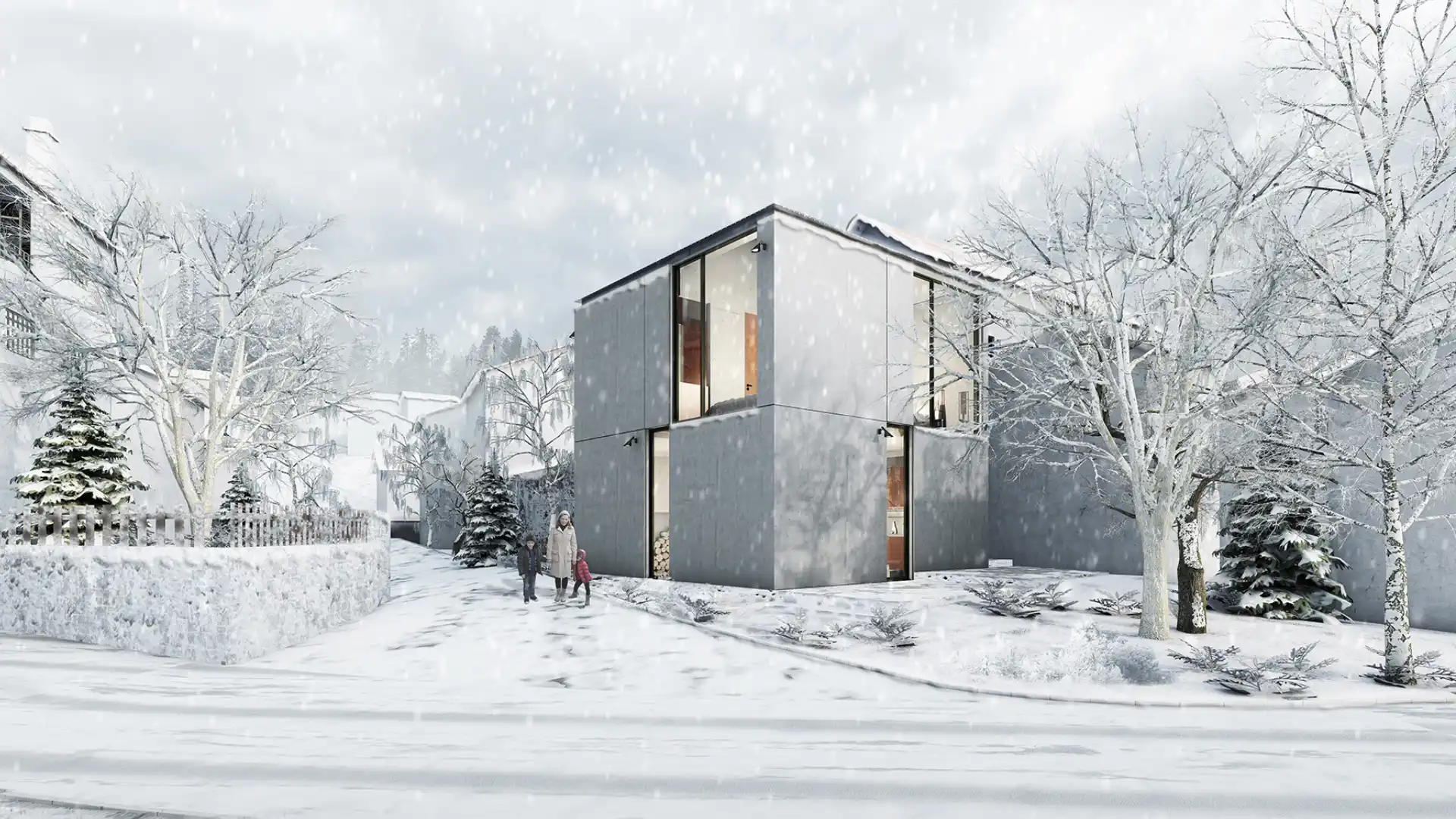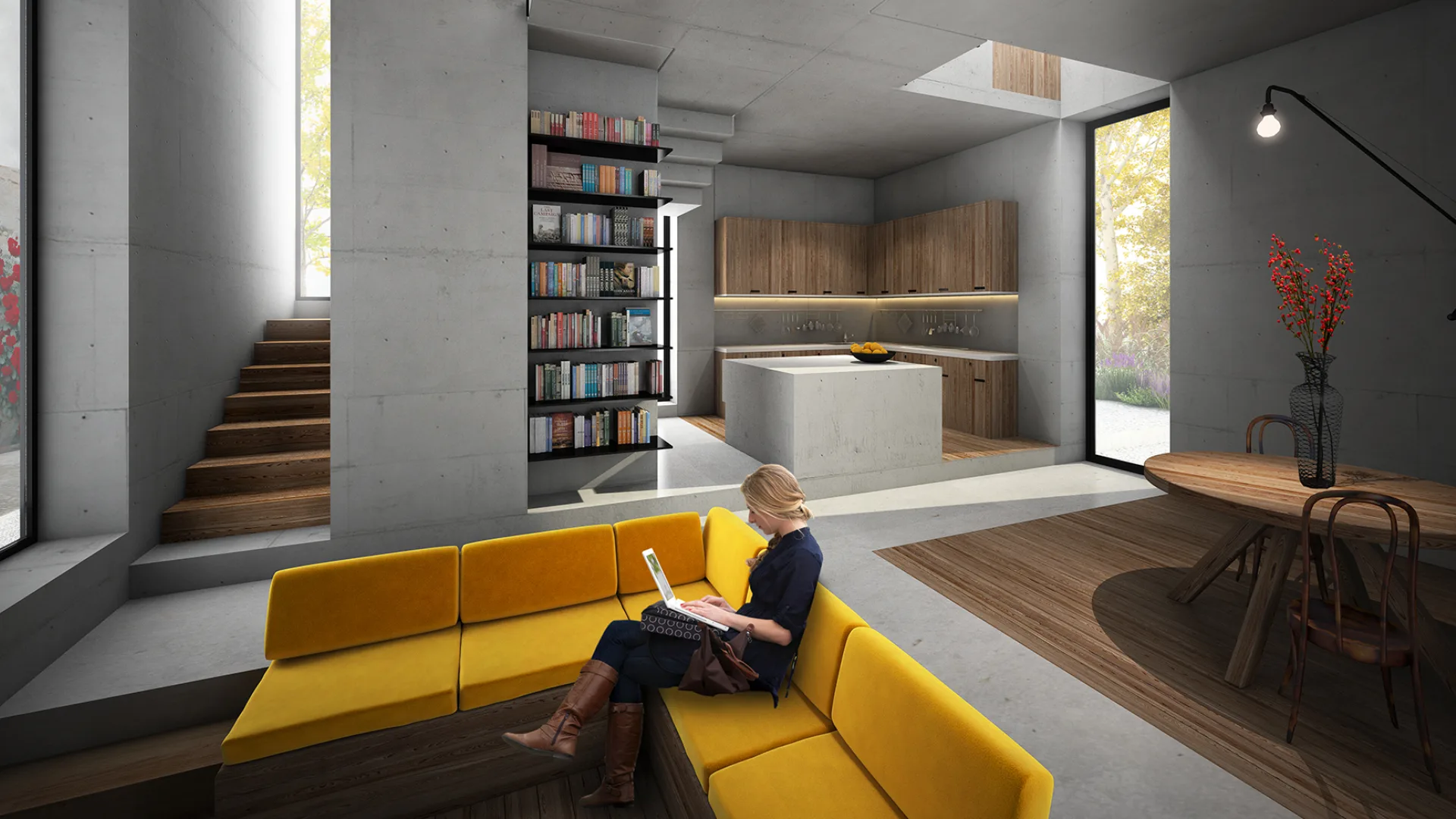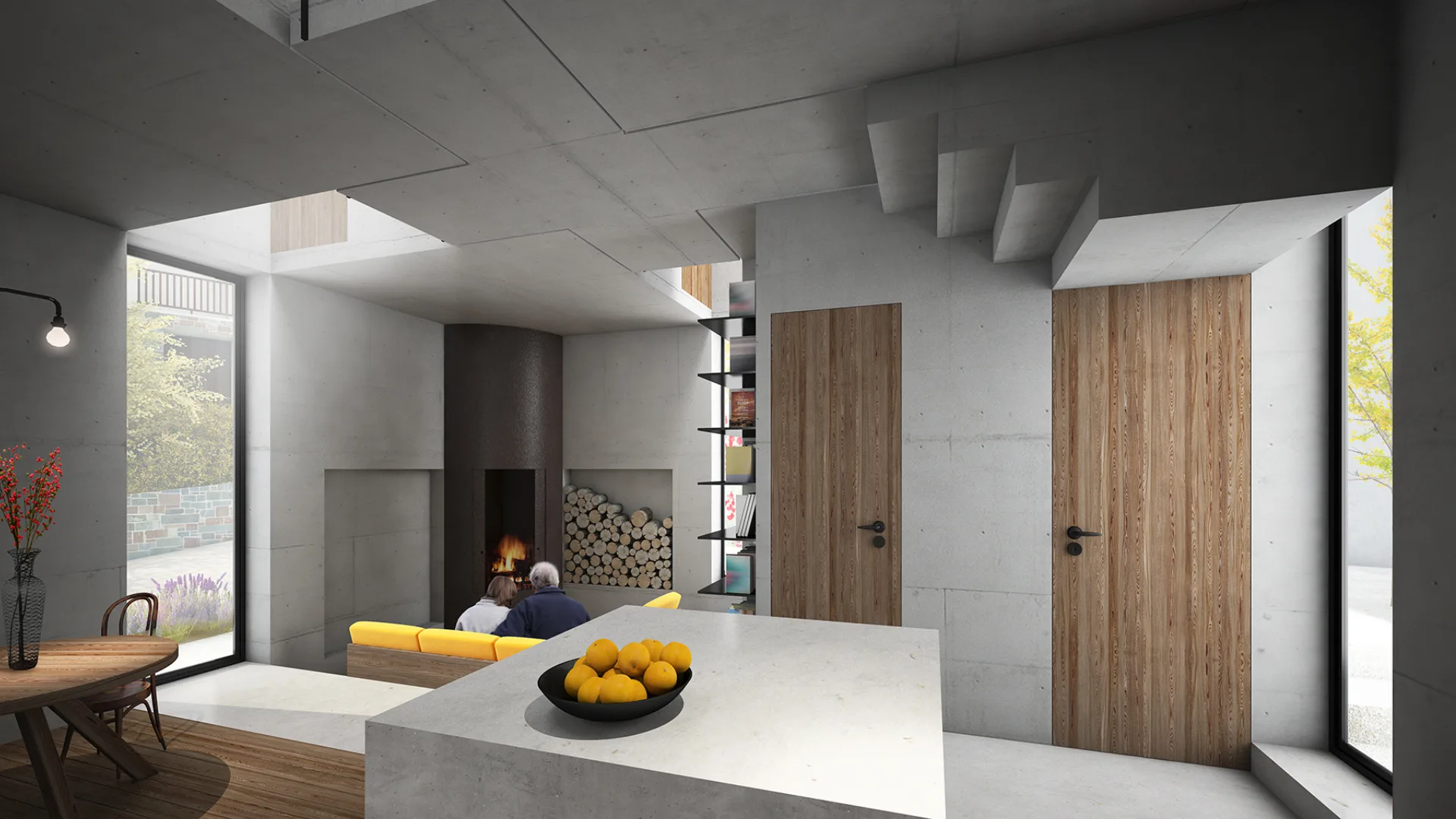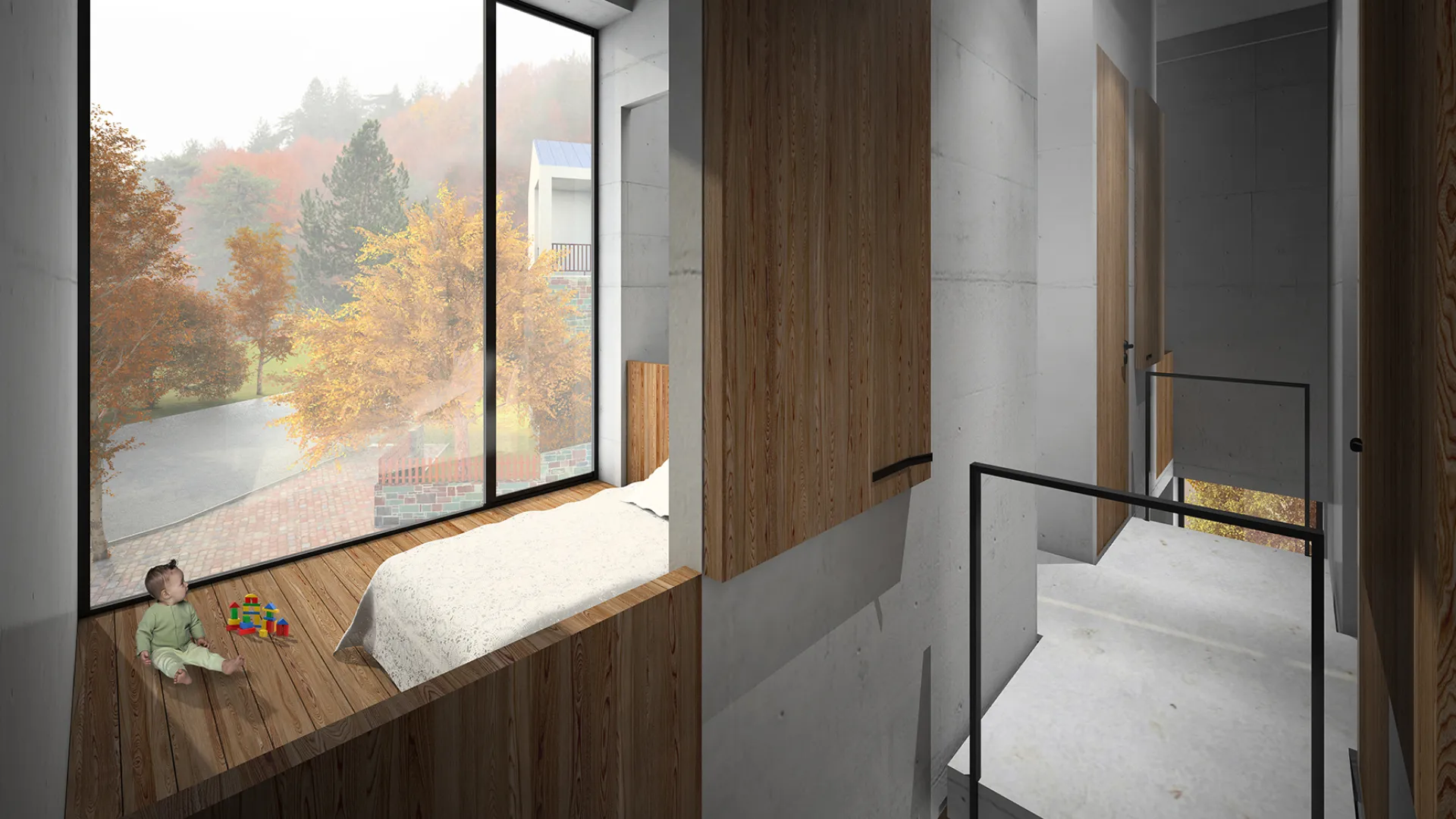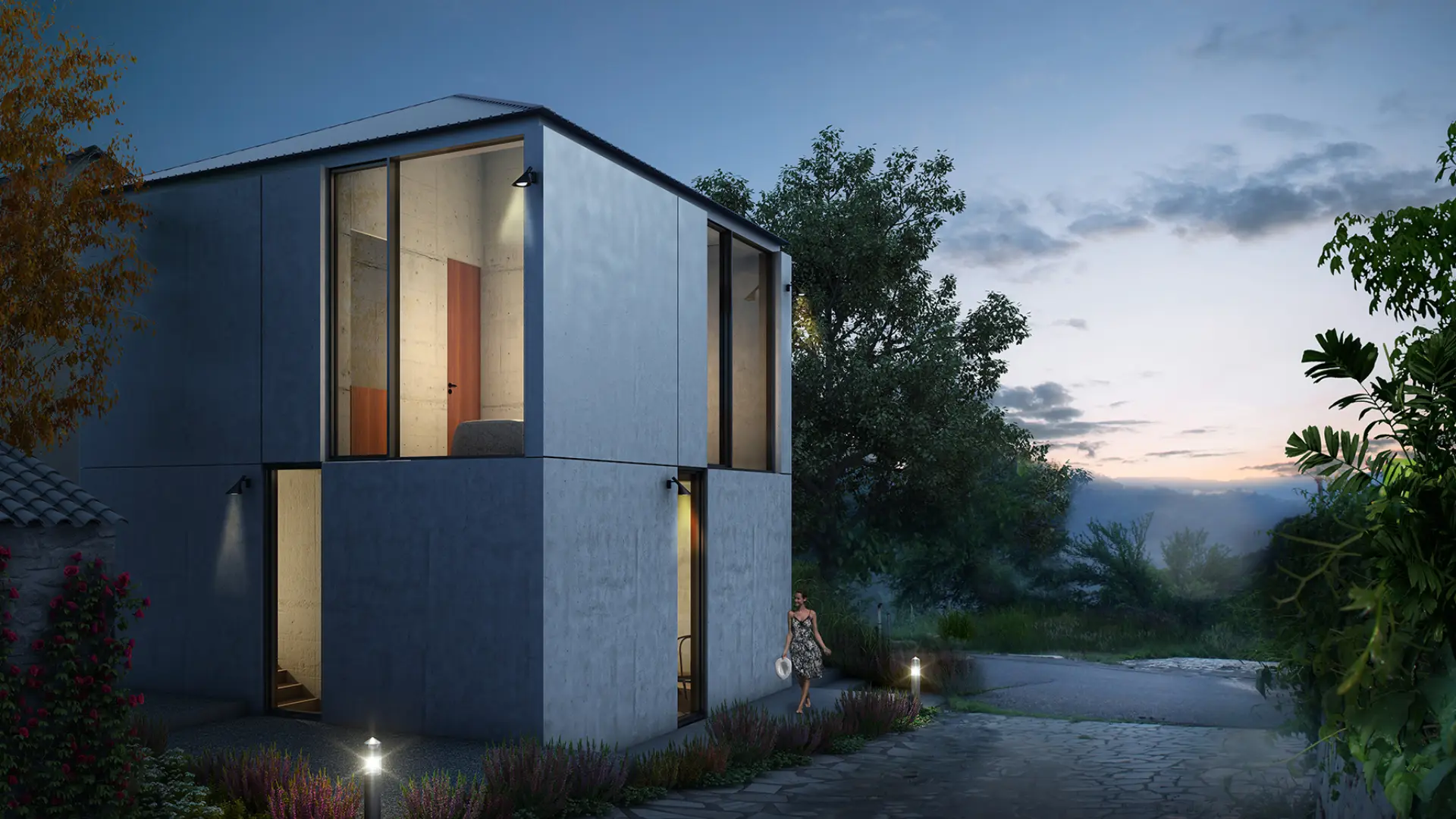Built on a hillside of the Pindos National Park, the house occupies a small lot, surrounded by a front road and three nearby houses. The setbacks conditions regulating a 3 meters distance of the windows to the property lines, defined a massing strategy that inscribes a rotated square within the irregular lot, allowing for openings at the ends of the façades that fall outside the setbacks. The result is a freestanding tower, unimposing but distinguished among the typical village constructions.
The square plan is subdivided into smaller squares by its axis, geometrically organizing central and peripheral circulation. Structurally it is conceived as four separate concrete towers supported by the outer sides, having the interior slabs cantilever from them. Central structural elements are eliminated and the slabs open up to generate interior connections from bottom to the roof. Given the spatial limitations, the function of the balconies is turned outside-in to maximize the perimeter walls and unify the interior. Interior wooden blinds regulate spatial privacy: they close to isolated spaces, or open for rooms to benefit from the views and light of the spaces across. The heavy concrete walls and light wooden partitions relate to the vernacular constructions of stone and wood. The inclined metal roof, typical of the village roofing landscape, is white as the snow it sheds.
Facade openings directly result from the structural and spatial concept. The first floor, a square plan with solid corners, is static, with a double axial symmetry and doors connecting to the exterior gardens; a paradigm of classical architecture, a Palladian Villa. The second floor has four independent sides whose length vary, it has a rotational dynamism, with generous glazed areas capturing the landscape beyond; a modern paradigm of space enclosure, a Miesian Villa. In this tension, the house synthesizes tradition and modernity, context and innovation, in a single whole.

